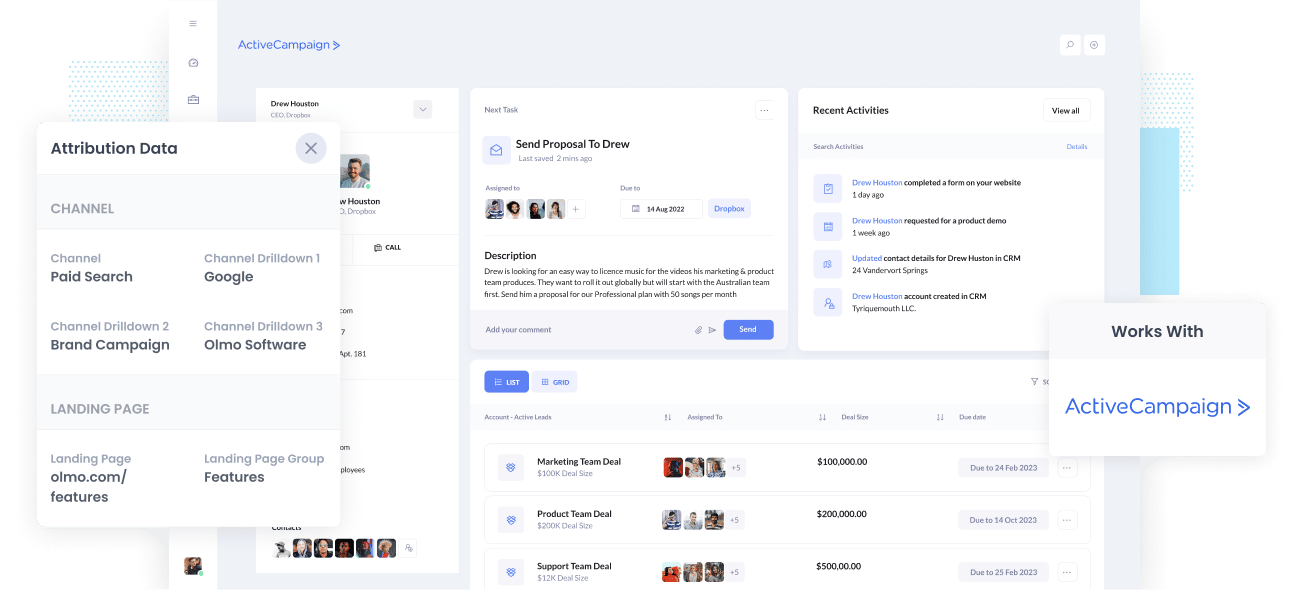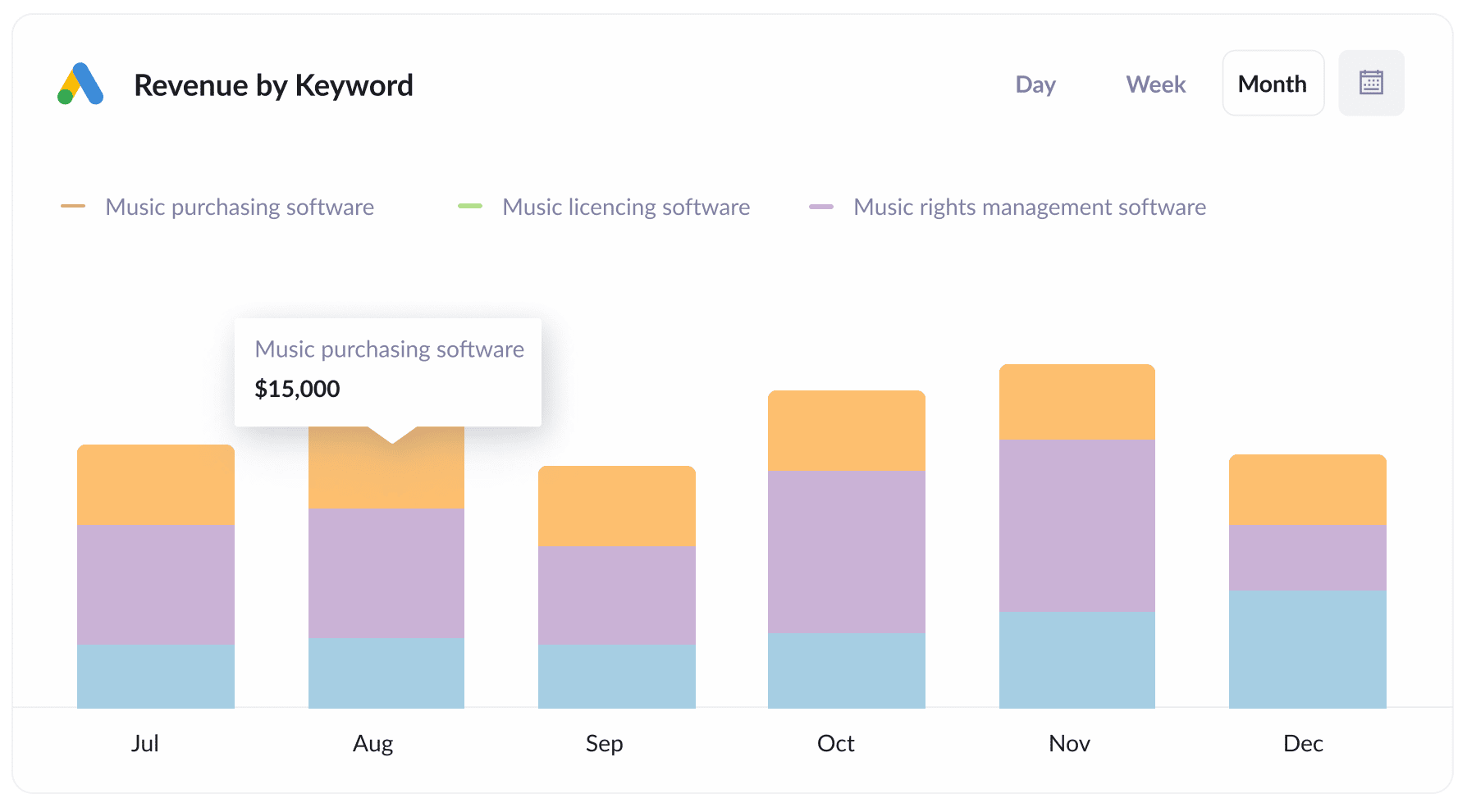The easiest way to get UTM Parameters into ActiveCampaign
Know what marketing channels & campaigns are generating your leads, customers & revenue by tracking UTM parameters in ActiveCampaign

As a business owner or a marketer, it is crucial that you understand the effectiveness of your marketing efforts so you know which marketing tactics to focus and hone in on, and which ones to abandon.
The best way to do this is to capture UTM parameters and other marketing attribution data about every lead you generate. This will allow you to run reports that show which campaigns and channels are generating you the best leads.
In this article, we'll show you how Attributer can help you capture UTM parameters in the ActiveCampaign and use them to better understand the success of your marketing efforts.
4 steps for capturing UTM parameters in ActiveCampaign
Using Attributer to capture UTM parameters in ActiveCampaign is easy. Here's how to do it in 4 easy steps:
1. Add UTM variables to your ads

To get started, you need to add UTM parameters behind every ad and campaign you're currently running. Most marketers do this anyway, but if you're not using UTM parameters then you're missing out on a powerful tool to measure your marketing efforts.
Add UTM parameters to paid ad campaigns (Facebook, LinkedIn, Instagram, Twitter, Google, Bing, etc.), social media bios, guest blogs, trade publication campaigns, and email marketing, to name a few. Wherever you link to your website, make sure you're including UTM parameters on those links.
2. Add hidden fields to your forms

Next, you need to add hidden fields to your website forms. These hidden fields don't appear on the form when it's shown to your website visitors, but still existing on the form in the background, allowing tools like Attributer to write information into them.
You'll need to add the following 6 hidden fields to your website forms:
- Channel
- Channel Drilldown 1
- Channel Drilldown 2
- Channel Drilldown 3
- Landing Page
- Landing Page Group
If you are using ActiveCampaign's built-in form builder then instructions for adding the hidden fields can be found here.
If you're using a 3rd party form builder (like Gravity Forms, WP Forms, Typeform, etc.) then it's as simple as adding 'Hidden' field types to your form.
3. Attributer automatically completes the hidden fields with UTM data

Now that everything is set up, when a user fills out a lead generation form on your website, Attributer will add the UTM parameters to the six hidden fields.
Using Dropbox as an example, let's take a look at how Attributer works.
Imagine a user searches for "ways to share large files" in Google, and at the top of the paid results is a Dropbox ad.
The user clicks the ad, arrives on a Dropbox landing page where they fill out a form to request a product demo.
Using the UTM parameters captured as the user landed on the website, Attributer completes the six hidden fields to look something like this (depending on the UTM parameters used):
- Channel = Paid Search
- Channel Drilldown 1 = Google
- Channel Drilldown 2 = Brand Campaign
- Channel Drilldown 3 = Dropbox
Attributer also includes the landing page and subdirectory:
- Landing Page = www.dropbox.com/features/share
- Landing Page Group = Features
4. UTM parameters are passed into ActiveCampaign

Finally, when a user submits one of your website forms, all the UTM parameters and landing page data from Attributer are submitted and sent to ActiveCampaign.
With this data, you can then run reports that show you how many leads & customers you got from each channel or campaign and determine the ROI of each of them.
What is Attributer?
Simply put, Attributer is a piece of code that runs on your website.
Whenever a person lands on your site, the Attributer code will do its thing to figure out how this person found your site, categorising each visitor into various channels such as Paid Search, Paid Social, Organic Search, etc. and storing it as a cookie in the visitor's browser.
When that visitor submits a lead form, the marketing channel information is passed along with the lead details into ActiveCampaign.
Attributer was created by Aaron Beashel, a B2B marketing consultant who realized he needed a tool to identify which channels were actually producing leads and customers as opposed to just visitors which is available from tools like Google Analytics.
"I originally built it to use on my client's website, but after a while, I realized it could be useful for businesses everywhere"
Why using Attributer is better than capturing raw UTM parameters
There are other tools in the market that can just capture raw UTM parameters and pass them into ActiveCampaign. But Attributer does more, including:
1. Captures all lead sources
Attributer provides information ALL lead sources, not just the users who arrive at your site from your paid ads with UTM parameters. So, even if a user comes from channels like Organic Social, Organic Search, Direct, Referral, etc. Attributer will still send information into ActiveCampaign.
This means that you can run reports that show where ALL of your leads are coming from, not just those that come from your paid ad campaigns.
2. Remembers the data across pageviews and sessions
If you're using one of the other UTM capturing tools on the market, the UTM parameters need to be present on the same page where the user completes a form in order for them to be passed into ActiveCampaign
This is a problem.
Let's say someone clicks one of your Facebook Ads and is redirected to your homepage.
From there, that user clicks 'Request A Quote' and is redirected to another page to complete the quote request form. Because the landing page and the form page are different, UTM parameters are lost meaning and can't be passed into ActiveCampaign.
But with Attributer, the UTM parameters are storied in a cookie in the visitor's browsers, meaning the original UTM parameters are never lost and will be passed into ActiveCampaign regardless of what page the form is completed on.
3. Provides cleaner data
If you've used UTM parameters in the past, you'll know that raw UTM data is often messy and inconsistent. This inconsistency invariably leads to inaccurate reporting, which defeats the point of tracking your leads.
As an example, imagine some of your Twitter campaigns are tagged with UTM_Source=Twitter.com (capital T), others with UTM_Source=twitter (lowercase, no domain), and others with UTM_Source=tw.
When you run reports on this data, these will look like three separate traffic sources instead of one.
Attributer can help with this though. It knows to expect inconsistencies like the ones mentioned above and can ascribe leads to the correct channel regardless (Paid social in this example)
3. Captures landing page data as well
Not only does Attributer capture UTM parameters and other channel data, but it also captures the landing page (I.e. attributer.io/blog/capture-utm-parameters-activecampaign) and the landing page category (I.e. /blog).
With this landing page data, you can further understand how effective those content pieces you spend hours writing and editing actually are.
And, because Attributer captures both the landing page and its group, you can analyze how groups of content are performing (I.e. your blog) as well as understand the performance of individual pages or pieces of content (I.e. individual blog posts).
4 example reports you can run when you capture UTM parameters in ActiveCampaign
If you are using Attributer to capture UTM parameters with each contact in ActiveCampaign, then it should be easy to run reports like the following:
1. Leads by Channel

The report above shows the number of leads generated each month, broken down by the channel they came from.
Reports like this are possible because Attributer captures attribution information on ALL leads, including those that come from organic sources (Organic search, Organic social, Direct, etc) without UTM parameters.
This means you can see how your paid ad campaigns are performing in comparison to your organic marketing efforts (like SEO and social media) and adjust your resources accordingly.
2. Leads by Facebook Ads Network

If you have ads running on the different networks Facebook offers (i.e., Facebook, Instagram, Messenger, etc.), the report shows you how many leads you are generating from each network.
The network the ad appears on can have a significant impact on performance, so being able to see how many leads you are getting from each can help you optimise your ad spend and generate more leads.
3. Customers by Google Ads campaign

This report shows you the number of customers generated each month from your Google Ads, broken down by the campaign they came from.
Being able to report on this data can help you see which campaigns are actually generating customers, as opposed to those that are just generating clicks and visits that don't actually convert.
And with this information, you can make informed decisions about how to best allocate your budget and grow your business.
4. Revenue by Keyword

If you put the keyword in the UTM parameters behind your Google Ads (which is easy to do using tracking templates), then you can capture the keyword your leads are typing into Google to find you.
This can give you granular insights into which of the keywords you are bidding on are actually generating customers and revenue, and can ultimately help you optimise your Google Ads spend and grow revenue.
Wrap up
If you're looking for a way to capture UTM parameters with each new contact in ActiveCampaign, then Attributer is a great solution.
It stores the UTM's in a cookie when the visitors arrives at your site and even help clean the data so that ultimately you have more accurate reporting on the performance of your various ad campaigns.
Beyond that though, it also captures data on leads who come from organic sources (like organic search, organic social, direct, etc) as well as capturing landing page data.
Ultimately by using Attributer, you'll have a much better understanding of where your leads and customers are coming from and what you need to do to get more of them.
And the best part is that there's a 14 day free trial, so you can try it out risk-free!
Get Started For Free
Start your 14-day free trial of Attributer today!

About the Author
Aaron Beashel is the founder of Attributer and has over 15 years of experience in marketing & analytics. He is a recognized expert in the subject and has written articles for leading websites such as Hubspot, Zapier, Search Engine Journal, Buffer, Unbounce & more. Learn more about Aaron here.
